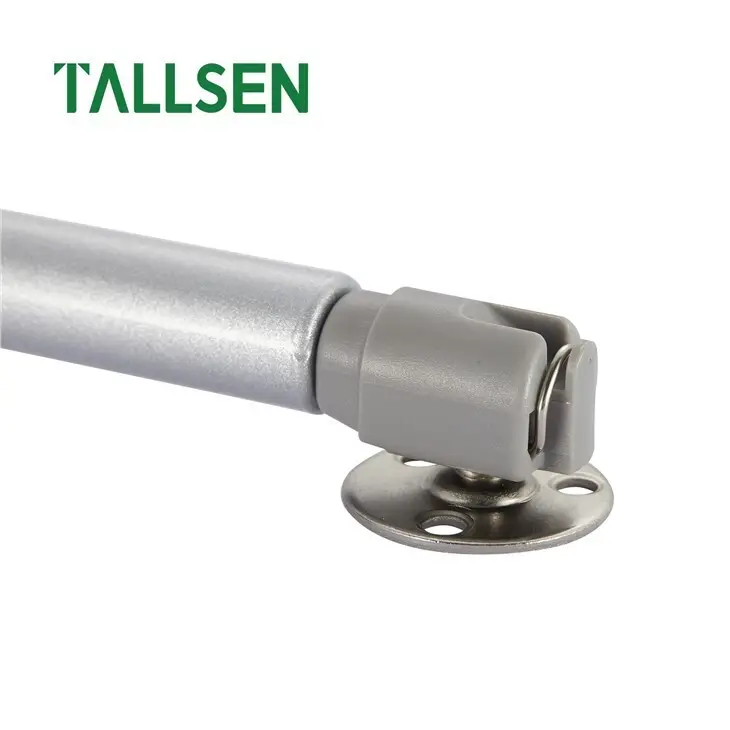
Gas Strut Stay Cabinet Door Hinge 250mm
Tube finish:Healthy paint surface
Rod finish:Chrome plating
Color option:Silver, black, white, gold
GS3160 Gas Strut Stay Cabinet Door Hinge 250mm
GAS SPRING
Product Description | |
Name | GS3160 Gas Strut Stay Cabinet Door Hinge 250mm |
Material | Steel, plastic, 20# finishing tube |
Force Range | 20N-150N |
Size option | 12'、 10'、 8'、 6' |
Tube finish | Healthy paint surface |
Rod finish | Chrome plating |
Color option | Silver, black, white, gold |
Package | 1 pcs/poly bag, 100 pcs/carton |
Application | Kitchen Hang up or down the cabinet |
PRODUCT DETAILS
| GS3160 Gas Strut Stay Cabinet Door Hinge 250mm can be used in kitchen cabinet. The product is light in weight, small in size, but large in load. | |
| With double-lip oil seal, strong sealing; plastic parts imported from Japan, high temperature resistance, long service life. | |
| Metal mounting plate, three-point positioning installation is firm. |
INSTALLATION DIAGRAM
Cabinet door struts are exactly like struts that you might find on a car's hatchback door. They are installed on horizontally hinged cabinet doors, such as above built-in ranges, or anywhere doors are hinged at the top instead of on the side. This type of strut contains compressed gas in a small cylinder with a piston that aids in lifting and holding the door open. Struts such as this are universal and not specific to cabinet doors. Choose almost any strut that can support at least 25 pounds for almost any cabinet door. You only need one strut to support almost any cabinet door.
FAQS:
Lift the cabinet door open to 90 degrees. Use an assistant to hold it there. Measure out from the edge of the door on the hinge side 2 1/2 inches and make a 2-inch-long mark across the side of the door. Measure perpendicularly along the first mark and make a mark at 1 inch. The point where the lines intersect is the center point of the bracket that holds the strut to the door.
Center the bracket on the cylinder end of the strut over the mark. The cylinder end is the large part of the assembly. The piston emerges from the cylinder with a diagonal downward movement toward the cabinet. There is an oval-shaped bracket on the end of the cylinder with two holes in it. Center the bracket on the mark, with the oval-shape perpendicular with the side of the door. Screw the bracket to the door using 3/4-inch screws and a drill/driver.
Extend the cylinder by pulling the piston all the way out. Swing the bottom of the piston into the cabinet so that it's 2 inches inside the face frame. There is an oval-shaped bracket on the end. If the bracket doesn't make contact with the side of the cabinet, screw a 3/4-by-4-by-4-inch piece of scrap wood between the bracket and the side of the cabinet using 1 1/4-inch screws. This is to allow the bracket to fit flush with the face frame of the cabinet.
Screw the bracket, centered, to the piece of scrap wood using two 3/4-inch wood screws. Shut the door normally.
Tel:+86-13929891220
Phone: +86-13929891220
Whatsapp: +86-13929891220
E-mail: tallsenhardware@tallsen.com








































































































